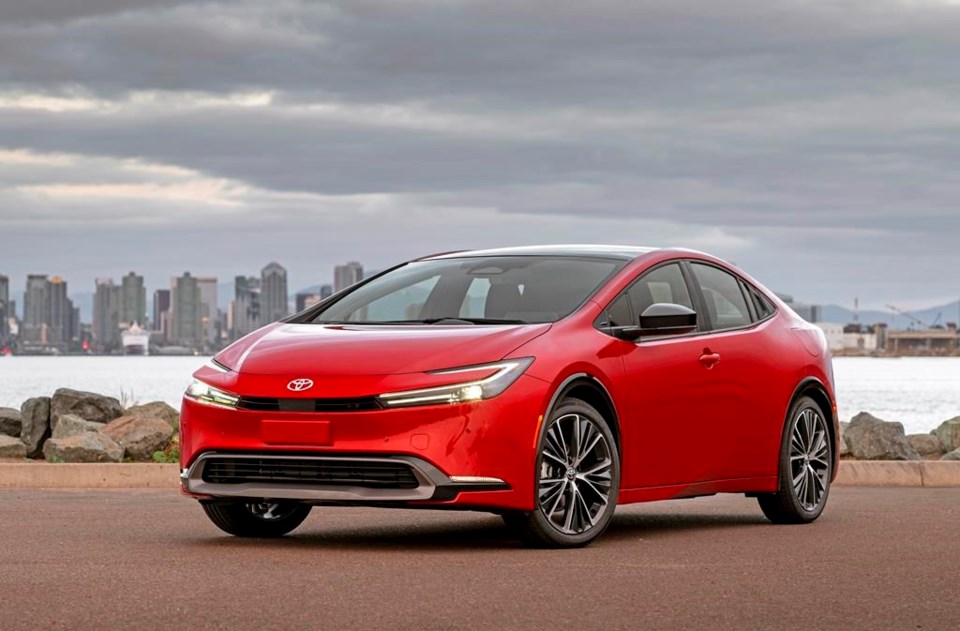The , which has become synonymous with the past 20 years, is fresh off a full redesign for 2023. The prior generation’s oddball styling, quirky interior and feeble powertrain are now in the rearview mirror. The new Prius now features an attractive look, a . It’s even more efficient than the previous model. But it’s not the only hybrid car you should consider.
The has been on the market since 2016, and like the Prius, it was also redesigned for the 2023 model year. The new Niro sports a stylish bold design, excellent technology and a roomier interior. But is Kia’s hybrid good enough to take on the long-running Prius? Edmunds experts compare them to find out which one is the better buy.
FUEL ECONOMY AND POWER The Prius and Niro are two of the most efficient hybrids you can buy, but the Prius sips fuel slower. The front-wheel-drive base model boasts an impressive EPA estimate of 57 mpg in combined city and highway driving, but that dips down to 52 mpg combined in the higher trims. With all-wheel drive, those estimates are 3 mpg lower in combined driving. The front-wheel-drive-only Niro scores an estimated 53 mpg combined in the base trim, but the less efficient higher trims are rated at 49 mpg combined.
When Edmunds drove the top-specced versions of both hybrids on its real-world test route, the difference was bigger. The Prius hit its EPA estimate by achieving 52.3 mpg, but the Niro got 47.7 mpg, a bit less than its EPA estimate.
Not only is the Prius more efficient, its 194-horsepower hybrid powertrain (196 hp with all-wheel drive) is significantly more powerful than the Niro’s, which produces only 139 hp. That ample amount of power propelled the Prius from 0 to 60 mph in 7.7 seconds, an impressive 2 seconds quicker than the Niro. More power and better fuel efficiency make it an easy win for the Toyota.
Winner: Toyota Prius
TECHNOLOGY AND INTERIOR SPACE The base trims of both hybrids come equipped with 8-inch touchscreen displays and digital gauge clusters. The Niro provides a larger 10.25-inch touchscreen on all other trims. The Prius offers an even bigger 12.3-inch touchscreen but to get it you have to add it as an option or buy the top trim level.
One advantage for the Prius is its standard wireless connectivity for Apple CarPlay and Android Auto smartphone integration; you’ll need to use a USB cord to connect in most Niro trims. It also packs tech-forward USB-C ports instead of the Niro’s older USB-A ports.
Cargo space behind the rear seats is almost even: 20.3-23.8 cubic feet in the Prius and 22.8 cubic feet in the Niro. That’s a sizable amount and more than you would get in a sedan. Front seat space is similar, but the Niro has more rear passenger room.
Winner: tie
COMFORT AND DRIVING Ride comfort is superb in both hybrids, which isn’t always the case in small cars. Their seats are also comfortable, although the Niro’s are on the firm side but have more bolstering to help keep you in place. As with most hybrids, both engines get loud under hard acceleration, but the Niro does a better job keeping out wind and tire noise.
Based on our testing, the Prius drives better hands down. Both hybrids are great around town, but the Prius’ quicker acceleration comes in handy on the highway. It also handles much better, making it more fun to drive. The Prius’ superior driving dynamics give it the win here.
Winner: Toyota Prius
PRICING AND VALUE The Prius’ starting price of $28,545 is a little higher than the Niro’s starting price of $27,915. Both base models come similarly equipped, but for an extra $1,400, you can add all-wheel drive to any Prius trim. The midlevel trims are also closely matched in features, but the Prius is once again a little pricier, although its additional power and mpg justify the extra cost. The Prius’ top trim, which is priced like the Niro’s, offers optional features at an added cost that the Niro doesn’t provide, including a self-parking system, heated rear seats and a surround-view camera system.
If warranties are important to you, Kia’s five-year/60,000-mile basic warranty tops Toyota’s three-year/36,000-mile warranty. However, Toyota offers two years or 25,000 miles of free scheduled maintenance.
Winner: tie
EDMUNDS SAYS: The Toyota Prius and Kia Niro are both highly rated hybrids by Edmunds. But as with any comparison, there’s a winner. The Toyota Prius gets the victory here thanks to its superior power, fuel efficiency and available all-wheel drive.
_______
This story was provided to by the automotive website .
Michael Cantu is a contributor at Edmunds and is on .
Michael Cantu, The Associated Press



